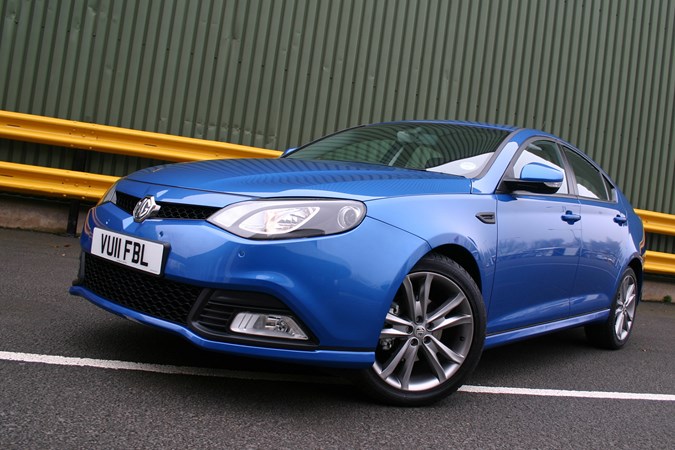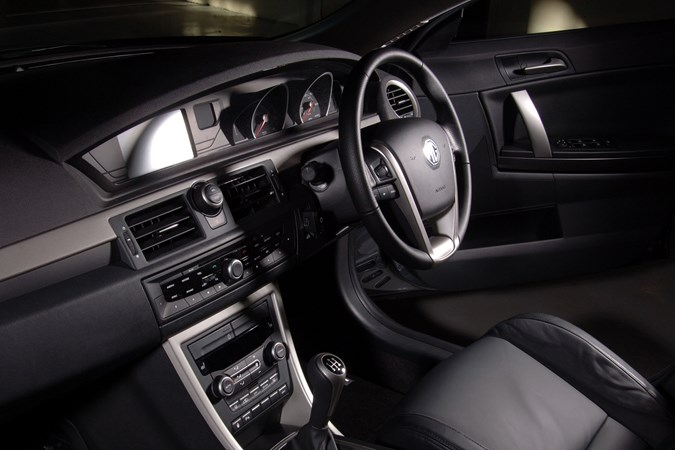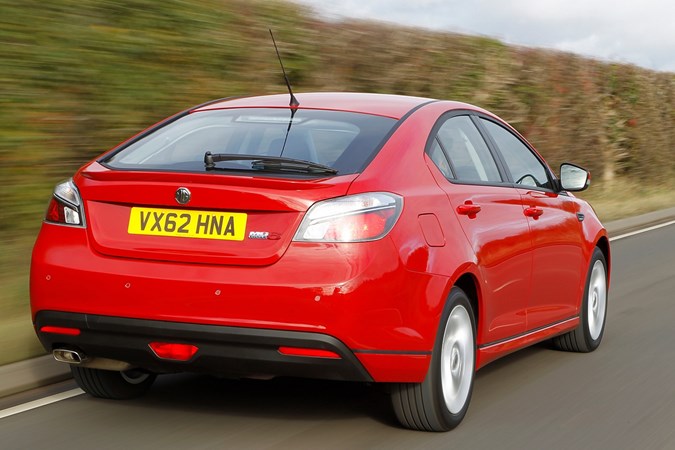
If you’re looking to buy an MG6, it’s worth getting familiar with its common problems, so you can avoid being caught out by them. Read on to get the full expert view on these little-known hatchbacks and saloons.
MG6 and Magnette known faults and common problems
Going on sale in the UK in 2010, the MG Motor UK MG6 promised so much but spectacularly missed the mark in terms of sales. Not because it was a poor car by any means, but more to do with hopeless marketing and overwhelming apathy from the buying public – it was a spectacular sales flop.
And yet it remains a comfortable, practical and well-equipped car. Today they are hilariously cheap, but to be a viable secondhand purchase, they have to be. Bought at a rock bottom price and in good condition, you have a pretty entertaining and roomy purchase of a family car.
Top 10 problems
Buying guide – common issues, and what to look for if you’re looking at getting one.
1 – Gearbox and clutch (1.8-litre petrol)
1.8-litre petrol versions were known for clutch and gearbox issues. Production was improved at time, and it continued to be evolved, but walk away from any car with a high pedal, juddering clutch or difficulty in selecting forward gears.
2 – Clutch (diesel)
Diesel cars can have problems with the dual mass flywheel (DMF). For a while they were unavailable off the shelf but since 2019, supplies have been recommenced. Be wary of a pulsating pedal when idling and/or any clattering when switching the engine off. A replacement new clutch kit is an eye-watering £570 excluding fitting.
3 – Brakes
Early models were subject to a service recall to replace inferior-quality brake pads fitted on assembly. Check with MG or a local dealer to be certain it was checked and dealt with. Beware as some of the poor quality items have found their way into the internet aftermarket parts supply chain.
4 – Electrical system
Some owners have fitted aftermarket DRLs (daytime running lights) fitted. Ham-fisted DIY wiring can cause gremlins and chaos to the body-control unit ECU. Also, be aware of failed alarm horns that can be too easily damaged thanks to their positioning behind the rear bumper. These are also susceptible to water ingress as are the parking sensors.
5 – ABS/traction control warning light
Faults with the ABS can often be pointed at defective sensor wiring on the front struts. Supplier components were often poorly made and had the water sheathing cut too short that caused water ingress and subsequent short circuits.
6 – Cruise control not working
Faulty clutch and brake pedal switches mean the cruise control is knocked out for safety reasons. Later parts are of better quality and the same part is fitted to each pedal. It’s a good bartering point and straightforward to DIY repair.
7 – Gear selector neutral warning
Affecting earlier cars was a batch of faulty gear position switches. This shows as a non-starting engine with a reminder to select neutral even when all is correct. If it clears after vigorously waggling and moving the gear lever, the switch is jinxed. It’s buried under the air trunking on the gearbox but not too taxing to put right.
8 – Service history
Many original owners have been MG enthusiasts – some of which have been DIY mechanics. Make sure you have a bevvy of paperwork and bills to back up any talk the vendor might have you believe. Also remember these cars are not worth anything like its rivals so walk away from any trade vendor who wants daydream screen prices. By far the best cars are privately owned.
9 – Interior trim

Top trim models feature leather seats, but it’s pig hide not cow. Check that everything works such as the Bluetooth and the CD player. The latter is fragile and of cheap quality and no longer available to buy new. Repair is by specialist only and double check the touch screen function on facelift cars works as it should.
10 – Exhaust system
Many cars are now requiring replacement of exhaust parts. The standard factory system is rather poorly designed and restrictive. Consult the owners clubs or specialists as most of the aftermarket systems club owners plump for are vastly superior to anything original equipment
Engine options
- 1.8 Turbo Petrol TCI-Tech 160hp with five-speed manual
- 1.9 Turbo Diesel DCi-Tech 150hp with six-speed manual
- No automatic model available in the UK
- All versions are front-wheel drive
Co2 Ratings
- Petrol: 174 to 182g/km
- Diesel: 119 to 139g/km
Model timeline
April 2011: Production commences at Longbridge Birmingham
May 2011: Five-door hatchback goes on sale with 1.8 petrol turbo
July 2011: Four-door Magnette saloon introduced
April 2012: Improvements to 1.8 petrol efficiency
November 2012: 1.9-litre turbodiesel launched
July 2014: Efficiency and emission improvements to 1.9 diesel
April 2015: Facelift model launched as 1.9 diesel hatchback only with three trim levels.
June 2016: Model deleted from the UK market
Main Dealer UK Coverage
• Slightly Below Average
Best Places to Buy
• Used car supermarkets
• Owners clubs or forums
DVSA Recalls
• Poorly located brake-pipe under bonnet
• Poorly fitted wiring loom inside car
Mike Humble says
On paper, the MG6 is a tough one to recommend. That said, they do drive rather well thanks to a sorted chassis and strong brakes. Designed and engineered in the UK, the MG6 was an early stepping stone in order to reintroduce the MG brand, and it was not as bad as pundits would have you believe at the time.
Buy the nicest one you can find but be patient and cautious, there are some worries regarding parts supply and manufacturer support. Secondhand values are on a par with those of a cracked mirror so refuse to pay above and beyond rock bottom prices. A lot of smiles per mile if the price is right and you’re open minded.
Further reading
>> MG6 owners’ reviews
>> MG6 full review
>> MG6 prices and valuation
>> Search for MG6 cars for sale

Just so you know, we may receive a commission or other compensation from the links on this website - read why you should trust us.


